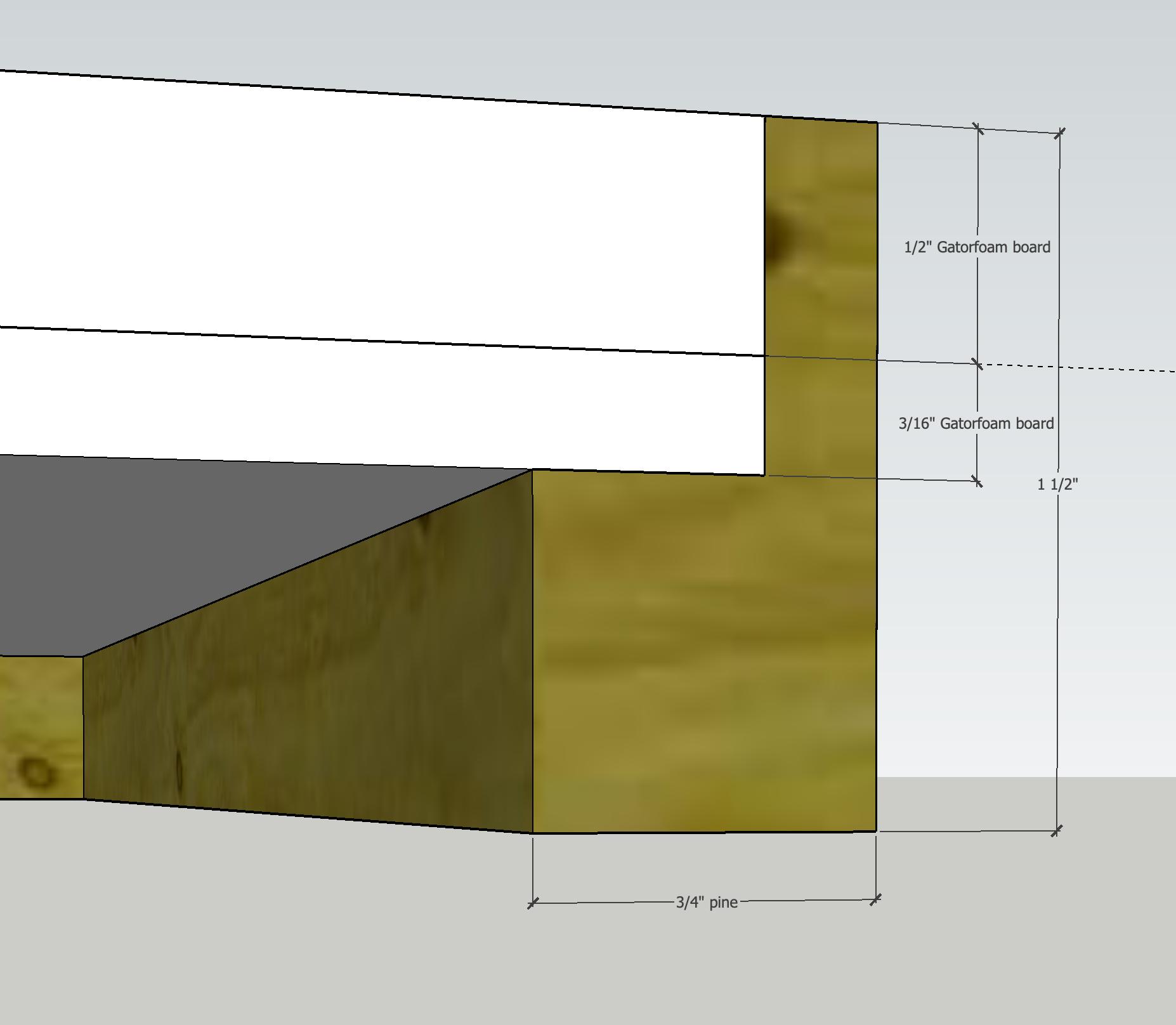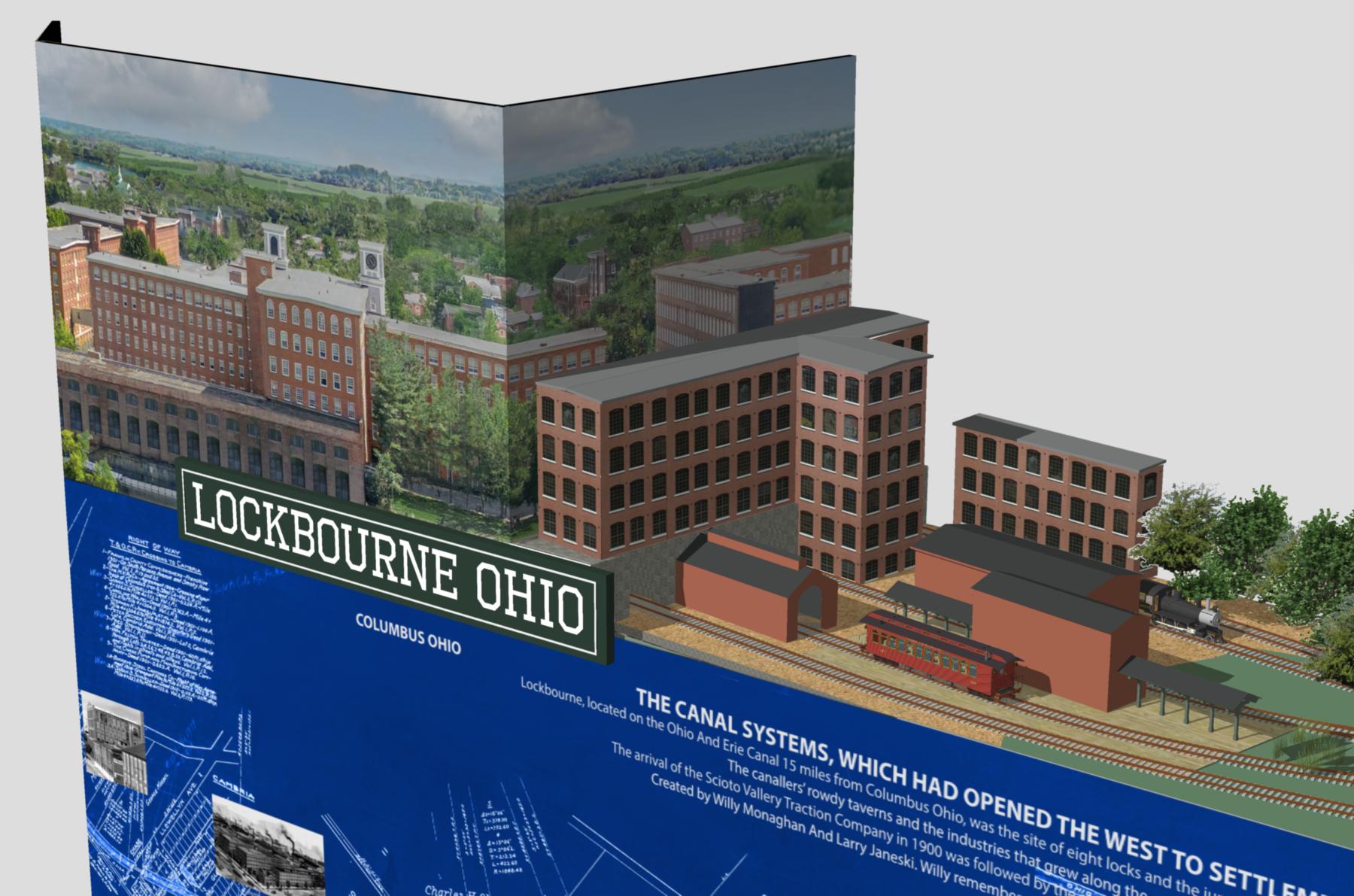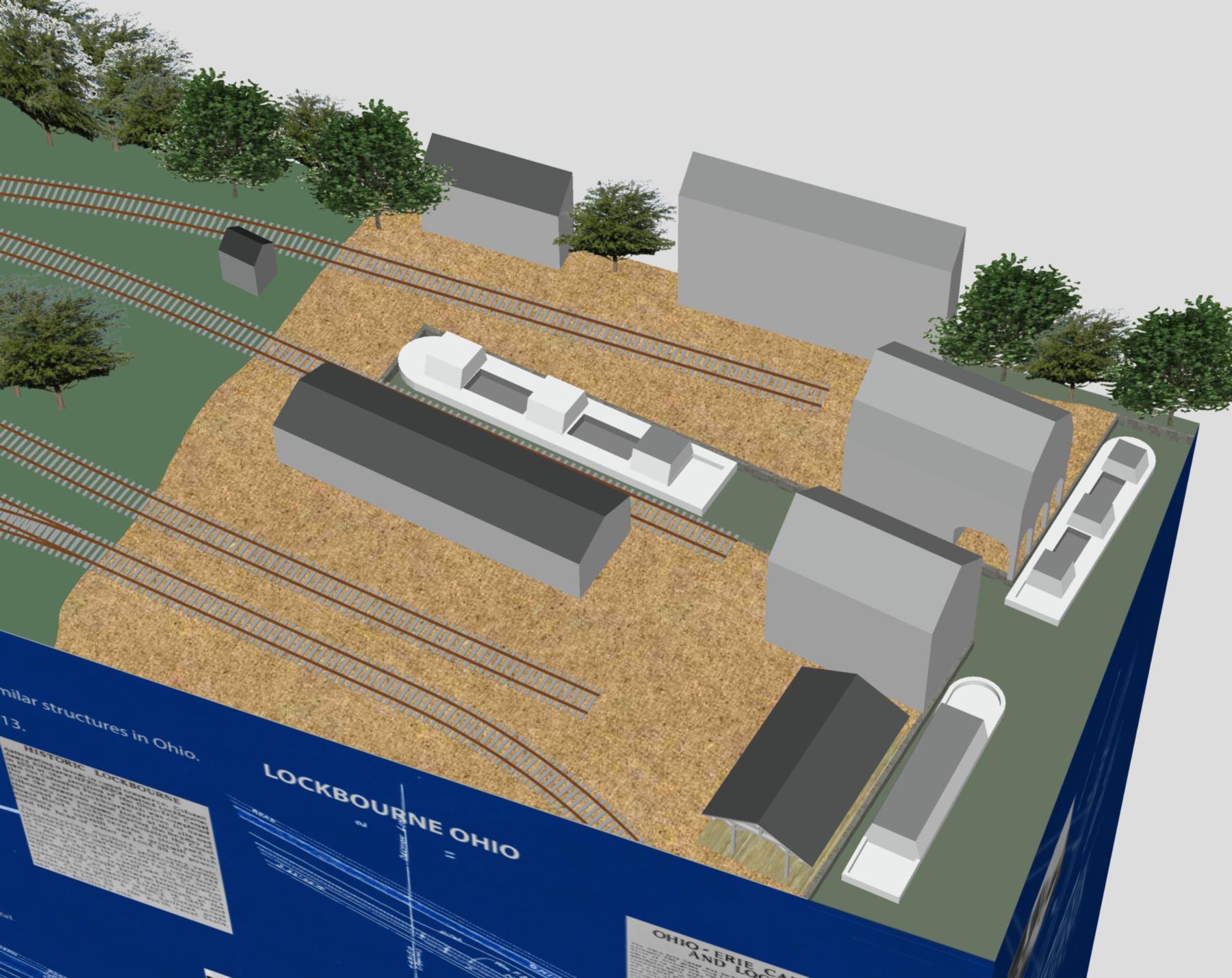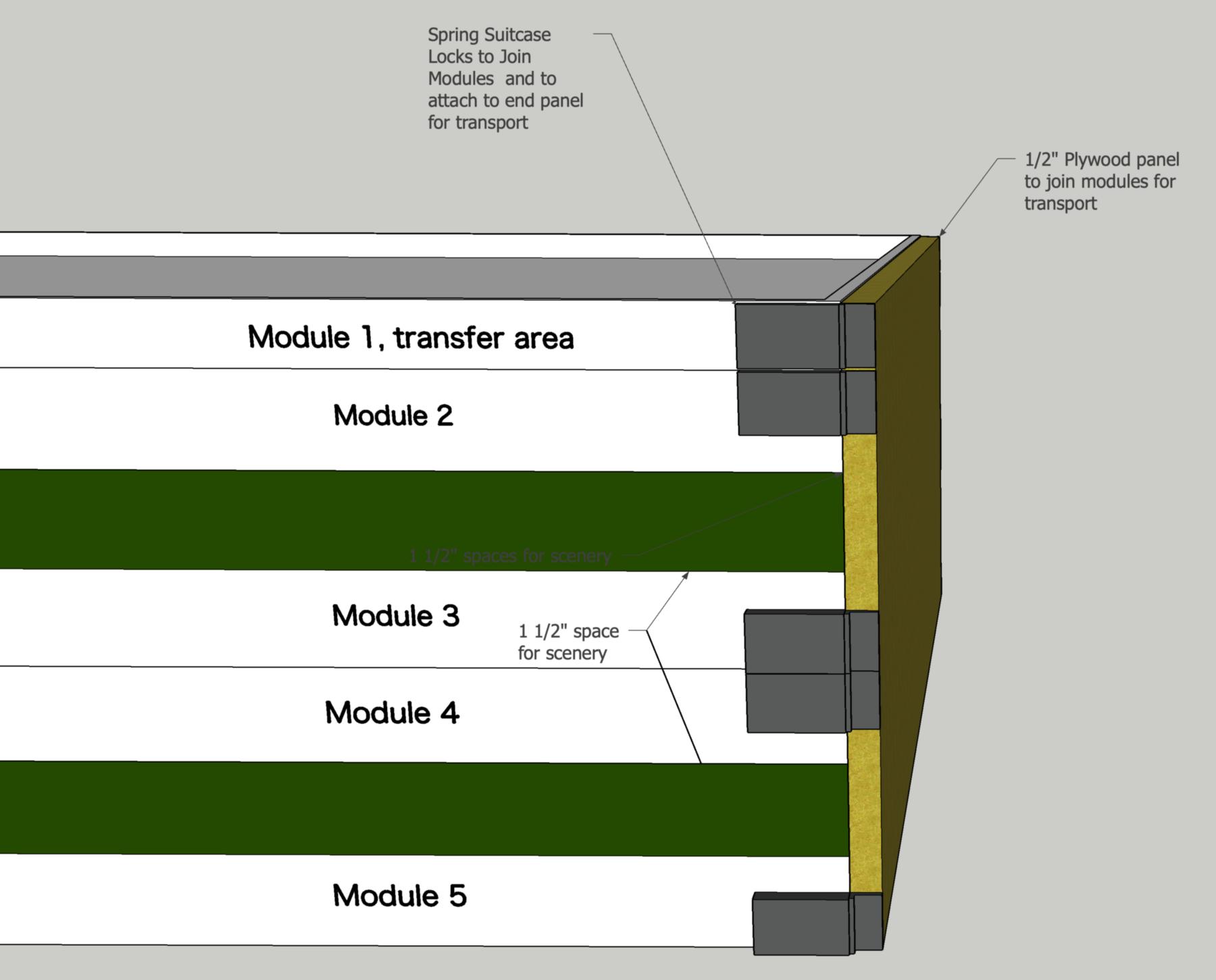The Layout's Roots
The layout came about due the realization that the Crescent City S Scalers of New Orleans, Louisiana were aging and continuing to display the club's large modular layout at shows around the country had become too daunting. Looking for alternative ways to still build and show an engaging layout, the crew studied British exhibition styles.
The Modular Approach
The "Table Top" approach offers an advantage in that it uses tables available at shows, which would eliminate the need for wooden legs and free up a carload of space. After several months of discussing ideas, the crew decided to build a table-top system that could be efficiently packed to fit in one motor vehicle, and even be transported as checked airline baggage.
The Theme
What most interested the crew was to portray rail transport from an industrial area to a canal port. For the United States that placed the date of the railroad around the end of the 19th century, the end of the canal era. That brought up the decline of the canals and the role of the railroads in displacing them, which became the theme of the project.
Historical reference to place and prototype railroad has become a feature of newer layouts in the United States, also following the British example. For the theme, the portrayal of canal transportation in layouts in British magazines was of particular interest because of their interaction with railroads, the lack of knowledge of canal's importance to the development of the United States, and the lack of representation of canals in model railroading in the United States made for a unique theme.
Research revealed that the canal system was far larger and more important than the crew had imagined, stretching from the Atlantic to the center of the country. And the canal structures from the middle of the 19th century, that were long gone and never seen on models, made for a fascinating plan.
While initially no specific prototype was chosen, as the crew proceeded with the design and module construction, they realized that crew member Larry Janeski was born in Lockbourne, Ohio, and Willy Monaghan spent summers at his grandfather's grain elevator there. Lockbourne was the site of eight locks on the Ohio and Erie Canal, and connected to the nearby industrial city of Columbus, Ohio with the the Norfolk & Western Railroad, and the Scioto Valley Traction Company. Willy remembers A-class articulated Norfolk & Western locomotives shaking the grain elevator, and saw a Scioto Valley Traction steeple cab cruising through the weeds, the exposed third-rail hot, on what must have been the last movement on the line. The crew then settled on centering the project on the Scioto Valley Traction Company, the Norfolk & Western, and the Columbus Feeder Canal between nearby Columbus, Ohio, and the Ohio and Erie Canal port at Lockbourne, Ohio.
British model railroads were a further inspiration as they frequently had colorful, lively representations of canals, perhaps more than in the United States, due to the presence of canals in the U.K. while few survive in the U.S. And, they illustrated strategies for interesting modular layout design and operation.
On a three-month visit to Oxford, Willy joined the Abington and District Model Railway Club, participated in their impressive spring show, and was inspired by hundreds of spectacular modular layouts seen at visits to shows.
Track Plan
With the objective of ease of transportation, interesting operation, and a point-to-point route, this led the crew to build a linear scheme reflective of British show layouts. The layout represents a switching design which features three main tracks.
The layout's skirting shows the routes of the Norfolk & Western Railroad, The Scioto Valley Traction Company, and the Ohio and Erie Canal. It helps the viewer orient themselves as to what they are seeing on the layout.
A transfer area at one end is screened by an image of brick mill buildings, similar to ones that were found in Columbus, Ohio in 1900, that was assembled using the software application Photoshop® from drone photographs of mill buildings in Massachusetts.
The right-hand side features the Lockbourne scene where the railroad and the canal system interchange their goods and passengers.
Module Construction
The modules are constructed out of a pine wood frame (shown as "wood" in the CAD drawing, below). The frame has a rabbit cut into it into which two layers of Gatorfoam board are positioned. Gatorfoam appears to be similar to conventional foam board one might find at a crafts store, but what sets it apart is that the surface layers are made out of resin-impregnated wood veneer, similar to what you would find in furniture-grade plywood. This makes Gatorfoam both light, strong, and dimensionally-stable.

A CAD drawing showing the basic design of a module, with two layers of Gatorfoam set into the pine frame.

Size, weight, and strength were key determinants in the design of the modules. Using airline oversize baggage limits of a maximum of 70 pounds and 74.8" x 29.5" x 25.5" dimensions, also produced box sizes one person could handle if handles were installed. The module size was set to 26" in width for the airline minimum. Length was made 38" long for manageable handling and to keep the weight down, and module thickness was 1.5" for control of volume. One half inch and three sixteenth Gatorfoam board were laminated to allow for a 5-foot (in S-scale, 3/16" equals a foot) variation in terrain. The board was glued into a rabbited pine frame to produce increased surface area for the adhesive. The result is a lightweight panel that is extremely rigid and has not warped.
Originally planned as a table top design, the low viewing angle and the lack of under-module access, led to installing telescoping 3/4" aluminum legs, mounted into threaded solid aluminum blocks glued into the corners of the modules. This then offered a 43-inch height and improved access.
The diagram below shows how the five modules are stacked and packed for both automobile and airplane transportation.
This photo shows the electronics involved in making this layout operational.
Summary
The layout consists of models that are in 1:64 scale, or S-scale. Commercial products are used where available, but a large amount of it was custom-made. When the five modules are fully set up, the layout measures 6 meters (19'8") long, 1 meter (3'3") deep, and 1.1 meter (3'7") high (excluding legs). It uses one power outlet. It has full LED lighting and a beautiful wrap-around skirting. It takes about three hours to set up, and can be run by two operators. The layout represents a seldom-modeled piece of historic signficance in a pleasing display for the general public.






